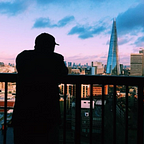The Decline of Drinking: New Year’s Eve is no longer a safe bet for alcohol brands — here’s why.
It’s the middle of January. The season of indulgence is but a distant memory. The focus now? Healthy living — dieting, exercising, and a promise that this year, well, it’s going to be different.
Or at least that’s what we’ve always assumed about this time of year.
A month of almost-abstinence — no excess of fatty foods, of unnecessary treats, of drinking alcohol. But, as consumers (Millennials in particular) continue their shift from carefree to conscious consumption, is this trope still an accurate one?
Streetbees spoke to hundreds of their community members on New Year’s Eve — long considered the crescendo of the Christmas period, the end of the excess, the time for one, final blow-out before the fun ends and the hard work, inevitably, begins — to understand whether our assumptions were still relevant.
And to do this, we focused on an industry within which brands often live and die by their December performance: alcohol.
***
An interesting place to start when looking at drinking habits on New Year’s Eve is the environment within which people will be celebrating. Mainstream media in both the US and the UK often tend to focus the pressure placed on public services from partygoers: revellers in bars, clubs and beyond.
But our snap study paints a different picture of those aged 18–35. In the USA, just 10% of respondents were attending an event in one of these venues. In the UK, the figure was almost identical: 11%. Over three quarters (76%) of the people Streetbees spoke to in the former said they’d be spending New Year’s Eve with family.
Surrounded by family members, it is perhaps understandable that younger people may feel the need to be slightly more restrained. But in both markets, the overwhelming theme is moderation, regardless of location.
When asked how much they intended to drink that night, almost half of the respondents in either country highlighted ‘a little’ as the most accurate reflection of their planned alcohol intake: 41% in the US and 47% in the UK.
This is even more apparent when you look at the bigger picture. The decline in New Year’s Eve is endemic of a wider refusal from Millennials to engage in more-than-moderate drinking. In the UK, where binge culture is most closely associated, 36% of respondents drink less than once a month. In the US, the figure rises to 42%.
For booze brands looking to continue to capitalise on New Year’s Eve, it’s clear that understanding their consumers’ changing attitudes is crucial to survival.
***
A quick word on our methodology: The figures in the article are taken from Streetbees Community members in the US and UK, carried out on New Year’s Eve 2017, with each of the participants aged between 18–35. All of the data was collected by mobile and web surveys, and is accurate to within 3 percentage points 19 times out of 20.
Streetbees is an independent research platform, founded on the principle of humanising how we collect data. Join our community today by downloading the Streetbees app.
